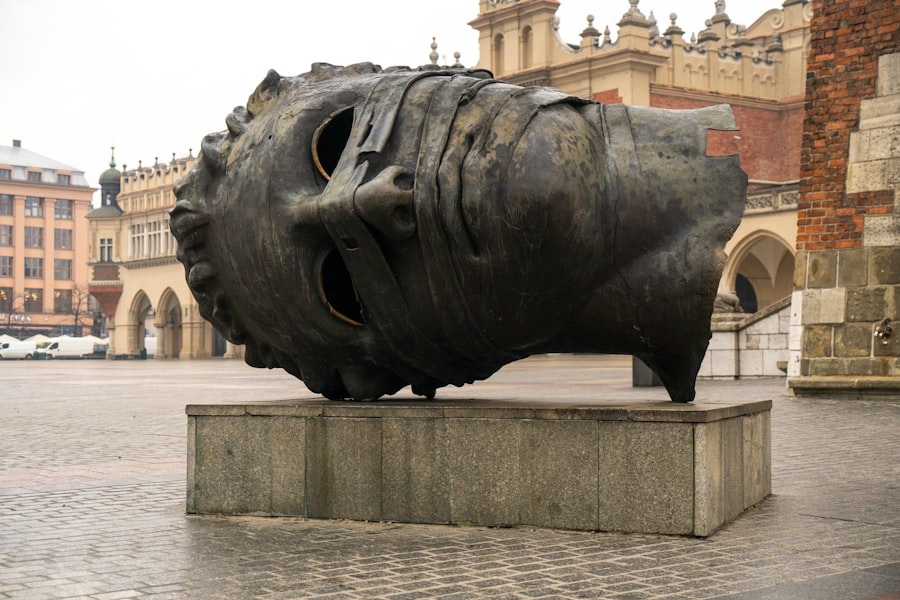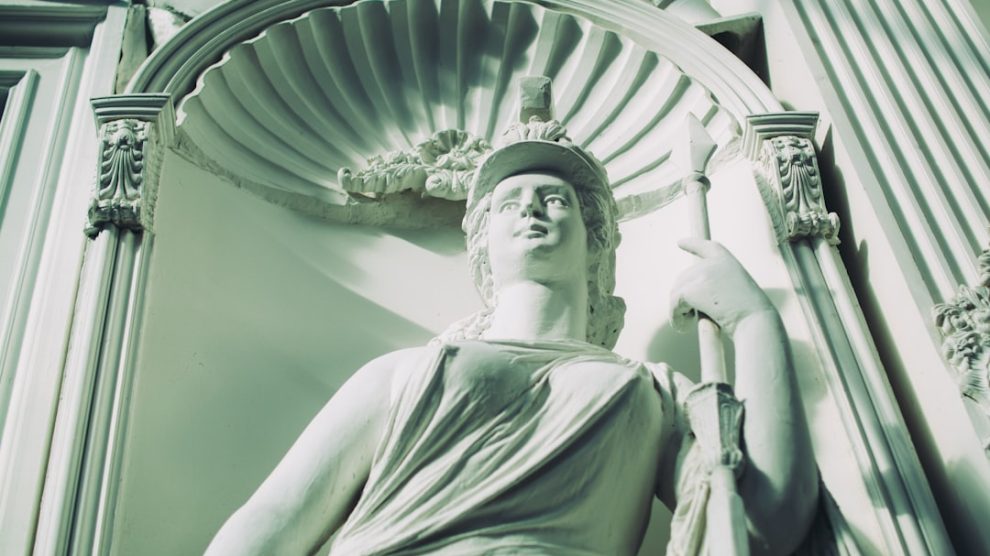As I delve into the realm of literature, I find myself increasingly captivated by the profound influence of Stoicism. This ancient philosophy, which emphasizes rationality, self-control, and virtue, has woven its way through the fabric of literary works across centuries. Stoicism teaches us to focus on what we can control while accepting what we cannot, a lesson that resonates deeply in the narratives crafted by authors throughout history.
The exploration of Stoic principles in literature not only enriches my understanding of characters and their motivations but also offers timeless wisdom that remains relevant in our contemporary lives. In literature, Stoicism often manifests through characters who embody resilience and moral integrity in the face of adversity. These figures serve as conduits for the philosophical tenets of Stoicism, illustrating how individuals can navigate life’s challenges with grace and fortitude.
As I reflect on various literary works, I recognize that the themes of Stoicism extend beyond mere character traits; they permeate the very essence of storytelling itself. The exploration of human experience through a Stoic lens invites readers to engage with complex emotions and ethical dilemmas, ultimately leading to a deeper appreciation for the human condition.
Key Takeaways
- Stoicism has been a prominent philosophy in literature, influencing characters and themes across different time periods.
- Classic literature often features stoic characters who exhibit self-control, resilience, and a focus on inner strength.
- Modern literature continues to explore stoic themes, emphasizing the importance of endurance and acceptance in the face of adversity.
- Stoicism has significantly impacted character development in literature, shaping protagonists with a strong sense of virtue and morality.
- Stoic characters in literature offer valuable lessons in resilience and endurance, inspiring readers to face challenges with courage and fortitude.
Stoic Characters in Classic Literature
When I think of classic literature, several Stoic characters come to mind, each representing the ideals of this philosophy in their unique ways. One such figure is Marcus Aurelius, whose meditations provide a glimpse into the mind of a Stoic emperor grappling with the weight of leadership and personal turmoil. His reflections reveal a man committed to virtue and rationality, even amidst the chaos of his reign.
As I read his thoughts, I am struck by the timelessness of his wisdom, which encourages me to cultivate inner strength and maintain perspective in my own life. Another compelling Stoic character is Odysseus from Homer’s “The Odyssey.” His journey home is fraught with challenges that test his resolve and character. Throughout his trials, Odysseus exemplifies the Stoic virtues of patience and perseverance.
He faces temptations and setbacks with a steadfast spirit, reminding me that true strength lies not in avoiding hardship but in confronting it with courage and wisdom. The portrayal of Odysseus as a complex hero who embodies Stoic principles adds depth to my understanding of heroism and the human experience.
Stoic Themes in Modern Literature

As I explore modern literature, I am fascinated by how Stoic themes continue to resonate with contemporary readers. Authors today often grapple with existential questions and moral dilemmas that echo the concerns of ancient philosophers. In works like Viktor Frankl’s “Man’s Search for Meaning,” I find a powerful exploration of resilience in the face of suffering.
Frankl’s experiences in concentration camps highlight the importance of finding purpose even in the darkest circumstances, a core tenet of Stoicism that encourages me to seek meaning in my own struggles. Similarly, in contemporary novels such as “The Road” by Cormac McCarthy, I encounter characters who embody Stoic principles as they navigate a post-apocalyptic world. The father and son duo exemplifies endurance and hope amidst despair, showcasing the power of love and connection as they confront an uncertain future.
Their journey serves as a poignant reminder that even in dire situations, we can choose how we respond to our circumstances. This theme of agency resonates deeply with me, reinforcing the idea that while we may not control external events, we can govern our reactions and attitudes.
The Influence of Stoicism on Character Development
The impact of Stoicism on character development is profound and multifaceted. As I analyze various literary works, I notice that characters shaped by Stoic principles often undergo significant transformations throughout their journeys. These transformations are not merely external; they reflect an internal evolution marked by self-awareness and moral growth.
For instance, in Shakespeare’s “Hamlet,” the titular character grapples with existential questions and moral dilemmas that challenge his understanding of duty and justice. His struggle to reconcile his emotions with rational thought mirrors the Stoic pursuit of wisdom. Moreover, characters who embody Stoic virtues often serve as catalysts for change within their narratives.
They inspire those around them to confront their fears and embrace resilience. In Harper Lee’s “To Kill a Mockingbird,” Atticus Finch stands as a paragon of moral integrity and courage. His unwavering commitment to justice in the face of prejudice exemplifies the Stoic ideal of acting according to one’s principles, regardless of societal pressures.
As I reflect on Atticus’s influence on his children and the community, I recognize how Stoicism can shape not only individual character arcs but also collective moral consciousness.
Lessons in Resilience and Endurance from Stoic Characters
The lessons in resilience and endurance imparted by Stoic characters resonate deeply with me as I navigate my own challenges. These figures often face insurmountable odds yet remain steadfast in their convictions. In “The Count of Monte Cristo” by Alexandre Dumas, Edmond Dantès embodies the essence of resilience as he transforms from a wronged man into a figure of vengeance and redemption.
His journey illustrates the power of patience and strategic thinking—qualities that are central to Stoic philosophy. As I witness Dantès’s evolution, I am reminded that resilience is not merely about enduring hardship but also about harnessing one’s experiences to emerge stronger. Additionally, characters like Santiago from Hemingway’s “The Old Man and the Sea” exemplify endurance in their pursuit of goals despite overwhelming challenges.
Santiago’s relentless struggle against nature serves as a metaphor for the human spirit’s capacity to persevere against adversity. His unwavering determination inspires me to embrace my own struggles with a sense of purpose and resolve. Through these literary portrayals, I learn that resilience is not an innate trait but a skill that can be cultivated through practice and reflection.
Stoic Virtues and Morality in Literature

The Power of Moral Courage
In George Orwell’s “1984,” Winston Smith’s struggle for authenticity in a totalitarian regime reflects the Stoic commitment to living in accordance with one’s values, even when faced with oppressive forces. This struggle resonates with me as it underscores the importance of moral courage in standing up for what is right.
The Pursuit of Justice
The exploration of justice within literature often aligns with Stoic ideals. In “Les Misérables,” Victor Hugo presents characters like Jean Valjean who embody compassion and redemption. Valjean’s journey from convict to benefactor illustrates the transformative power of justice rooted in empathy rather than retribution.
Transcending Societal Norms
As I engage with these narratives, I am reminded that true morality transcends societal norms; it is grounded in our capacity for understanding and compassion—qualities that are central to Stoic thought.
Stoicism and the Art of Acceptance in Literature
Acceptance is a recurring theme in literature that aligns closely with Stoic philosophy. As I reflect on various works, I recognize that characters who embrace acceptance often find peace amidst turmoil. In “The Alchemist” by Paulo Coelho, Santiago’s journey toward self-discovery emphasizes the importance of accepting one’s path while remaining open to life’s possibilities.
His willingness to embrace uncertainty resonates with me as it highlights the beauty of surrendering control over outcomes while remaining committed to personal growth. Similarly, in “A Man Called Ove” by Fredrik Backman, Ove’s journey toward acceptance reveals the transformative power of connection and community. Initially portrayed as a curmudgeon resistant to change, Ove learns to accept both his past and present circumstances through his interactions with others.
This narrative arc serves as a poignant reminder that acceptance does not equate to passivity; rather, it is an active choice that allows us to engage more fully with life’s complexities.
The Impact of Stoic Philosophy on Literary Works
The impact of Stoic philosophy on literary works is profound and enduring. As I explore various texts across genres and eras, I am struck by how authors have drawn upon Stoic principles to craft narratives that resonate with readers on multiple levels. From classic epics to modern novels, the themes of resilience, virtue, and acceptance continue to shape our understanding of human experience.
In conclusion, my exploration of Stoicism in literature has illuminated the ways in which this ancient philosophy informs character development, moral dilemmas, and thematic depth across diverse narratives. The lessons imparted by Stoic characters inspire me to cultivate resilience and embrace acceptance in my own life while encouraging me to reflect on my values and choices. As I continue my literary journey, I carry with me the timeless wisdom of Stoicism—a guiding light that enriches my understanding of both literature and life itself.









Add Comment